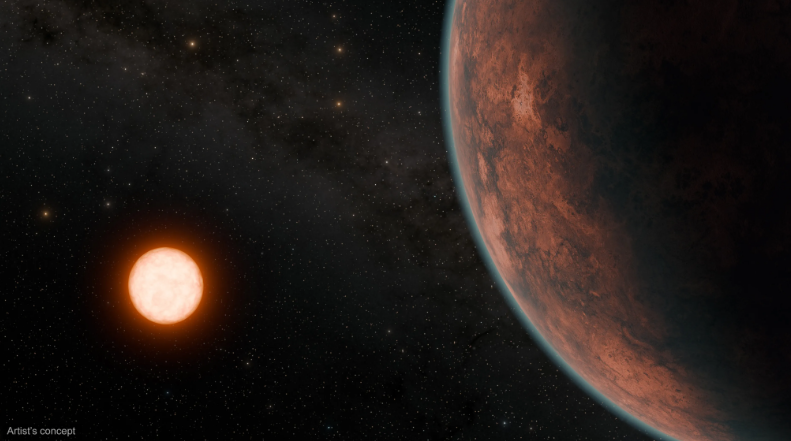Earth-sized Exoplanet Discovered: Potential for Life 40 Light-Years Away (GS Paper 3, Science & Tech)

Introduction:
- Astronomers have made a groundbreaking discovery, locating a potentially habitable exoplanet, Gliese 12 b, merely 40 light-years away from Earth.
- This Earth-sized world, with an average surface temperature cooler than most exoplanets, holds promise for further exploration to ascertain its habitability.
Key Details of the Discovery:
- Detailed in a study published in the Monthly Notices of the Royal Astronomical Society, Gliese 12 b's attributes captivate scientists.
- It boasts an average surface temperature of 42 degrees Celsius, slightly cooler than Earth's, and shares similarities in size with Venus and Earth.
Crucial Investigations Required:
- Despite its promising characteristics, researchers emphasize the necessity of additional analysis, particularly regarding Gliese 12 b's atmosphere.
- The presence of a conducive atmosphere is imperative for the sustenance of life and warrants further scrutiny.
Significance of the Discovery:
- Masayuki Kuzuhara, a project assistant professor at the Astrobiology Center in Tokyo, heralded the discovery, highlighting its proximity and potential habitability.
- The exploration of Earth-sized exoplanets holds paramount importance in understanding our cosmic surroundings and humanity's place in the universe.
Technical Validation and Observations:
- Utilizing data from NASA's Transiting Exoplanet Survey Satellite (TESS) and the European Space Agency's CHEOPS, astronomers validated Gliese 12 b's existence.
- The exoplanet orbits a M dwarf star, Gliese 12, every 12.8 days, accompanied by seven other planets.
Habitability and Atmospheric Conditions:
- With three planets within the star's habitable zone, Gliese 12 b presents intriguing prospects for habitability.
- Moreover, its host star's metal-poor nature suggests the potential for an atmosphere conducive to life, although differing from Earth's.
Implications and Future Endeavors:
- The discovery of Gliese 12 b holds promise for NASA's James Webb Space Telescope (JWST), capable of discerning atmospheric features.
- The ongoing pursuit involves determining the exoplanet's mass, density, and internal structure to unravel its mysteries further.
Conclusion:
- Gliese 12 b represents a milestone in humanity's quest to unravel the mysteries of the cosmos.
- Its discovery underscores the burgeoning potential of space exploration and the quest for life beyond our solar system.
- As astronomers delve deeper into its characteristics, Gliese 12 b promises to unveil further revelations about our universe and the possibility of extraterrestrial life.


